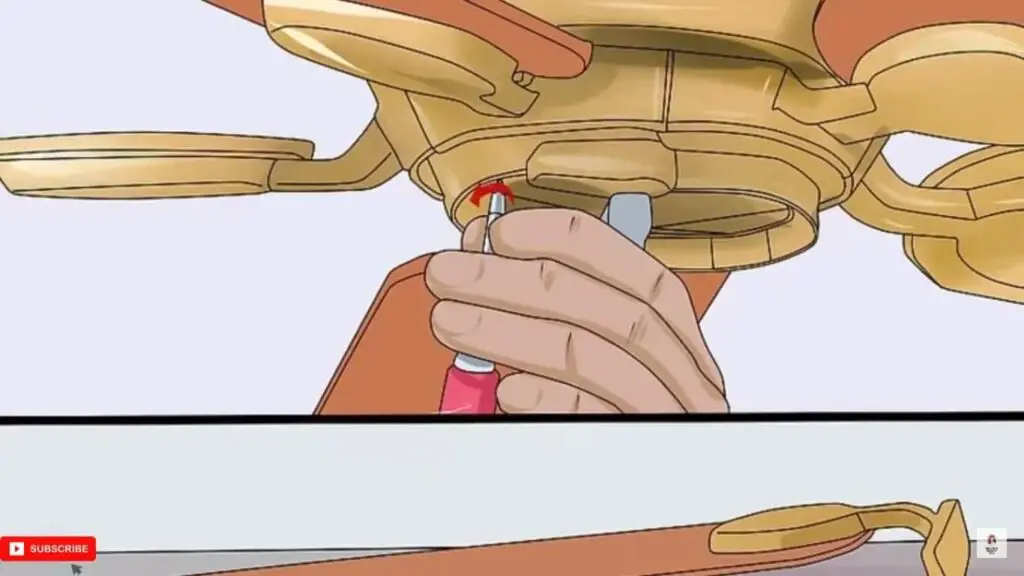Ceiling fans are the perfect addition to any space that ensures cooling in hot weather. They are also a beautiful design element, giving the room an atmosphere. In this guide, I will teach you how to oil a ceiling fan without taking it down.
While many homeowners are happy with the appearance of their ceiling fans, if you want to retrofit your home, you may want to upgrade your ceiling fan. But first, ensure the fan is properly oiled to minimize clutter and damage to the ceiling and the new fan.
How to Oil a Ceiling Fan without Taking it Down?

Most rotating parts require oil, including the ceiling fan. Therefore, it is necessary to oil for smooth and quiet rotation from time to time. If you do not top up the oil in time, the system will jam, increase friction and noise, and eventually, your fan will fail quickly.
All types of fans do not require user oil. Some fans are delivered permanently oiled.
Follow our step-by-step instructions;
Check the manual.
If you notice that your ceiling fan is running slowly or making noise, you may need to oil it. Most fans come with a manual; please find and read it carefully. Most brands provide basic maintenance instructions.
However, following the steps below, you can oil the ceiling fan with oil without removing it.
Read More: How To Wire A Ceiling Fan
Turn off the power.

Make sure the ceiling fan is off. For added protection, you can turn off the circuit breaker to prevent the possibility of an accident if someone turns on the fan switch.
Read more: How To Turn On Ceiling Fan Without Remote
Install the ladder.

The ladder will help you get to the ceiling and ensure you are safe before going upstairs. Place the ladder on a flat surface and secure it.
Find the oil hole.

Find the top around the engine. This is a small hole. It’s commonly found at the engine’s top. If you don’t find a small “oil hole,” it’s probably a permanently lubricated ceiling fan.
Check the oil level.

You need a pipe brush to check the oil level. Do this as a J-hook and insert one inch into the hole.
Buy engine oil for electric motors.

You will need detergent-free engine oil for the ceiling fan, so you should not use regular engine oil. You can buy it online if you can’t find it at your local store. See the user manual to see if your model requires a specific type of oil.
Prepare the hole.

Clean the oil hole and also the fan. Clean the fan with a common detergent and cloth. Make certain the area is dust-free and clean. To avoid dirt clogging the oil hole, wipe before applying oil.
It would help if you kept the fan clean. If you want your ceiling fan to run smoothly without noise and problems, clean the fan once a month.
Fill the oil hole.
Slowly pour the oil into the oil hole. Use your 1/2 pipe cleaning hook to check it frequently and stop falling when the pipe touches the oil. If you have not added oil for a long time, you may need 2 ounces or more of oil. After filling the hole, everything is ready without dismantling the fan.
Frequently Asked Questions
What Kind Of Oil Do You Put In A Ceiling Fan?
Lubricate your fan with 10-, 15-, or 20-weight detergent-free motor oil to keep your fan operating smoothly. Detergent can build up on the bearings and cause them to stick. Not recommended is the use of 3-in-1 or other penetrating oils. Because they are non-detergent, oils with viscosity ratings (SAE numbers) of 10, 15, or 20 are ideal for lubricating the moving parts of a ceiling fan.
Can You Use WD on A Ceiling Fan?
Since WD40 is not an oil-based lubricant, spraying it on the ceiling fan motor will cause more harm than good.
WD-40 is ineffective as a lubricant, and you should not use it on a ceiling fan. WD-40 was initially created as a rust remover and solvent.
How often should ceiling fans be oiled?
If your ceiling fan is one of the easy-to-lubricate models, you should lubricate it once a year. Because their bearings are sealed, other models, especially newer ones, should not require lubrication. As a result, ceiling fans, like all machines with moving parts, require regular lubrication to function correctly. According to Flush Mount Ceiling Fans, specific contemporary fan models are self-lubricating and require minimal maintenance.
Can a Hampton Bay ceiling fan be oiled?
If the motor of a ceiling fan has an oil hole, it must be routinely oiled because it was designed to be oiled. It would help if you oiled the fan once a year. Most ceiling fan motors are self-lubricating and do not need lubrication unless specified in the instructions.
Is it necessary to oil the ceiling fans?
Like any machine with moving parts, Ceiling fans require regular oiling to keep them running properly.
Can silicone spray be used on the ceiling fan?
You can spray a small amount of aerosol lubricant (silicone or WD-40) on the joint – don’t overdo it again, but a small impact on the wires won’t hurt.
Can I use olive oil to lubricate the fan?
To use olive oil as a mechanical lubricant for parts such as fan shafts and moving or rotating parts outside the interior? Like most vegetable oils, Olive oil is an excellent lubricant in addition to its poor oxidative stability.
What can be used instead of machine oil?
White mineral oil is a light oil that can be used instead of sewing machine oil. Its other name is liquid oil because it is a by-product of the oil distillation process.
Expert Advice
Over time, your ceiling fan may wear out due to prolonged downtime. If you notice that your ceiling fan is noisy or starts slowly and with slow air movement, the oil level has dropped to a very low level, and the oil needs to be topped up. Regular maintenance ensures smooth operation and long life of the ceiling fan motor. You should check the oil level yearly, clean the fan blades, and cover them monthly.




